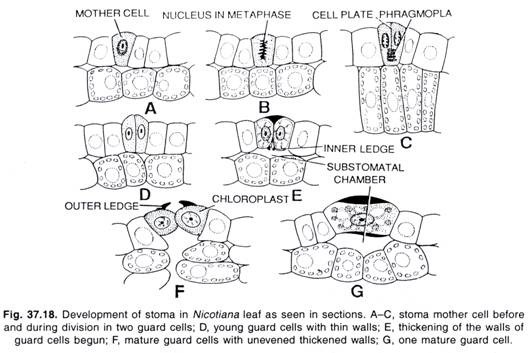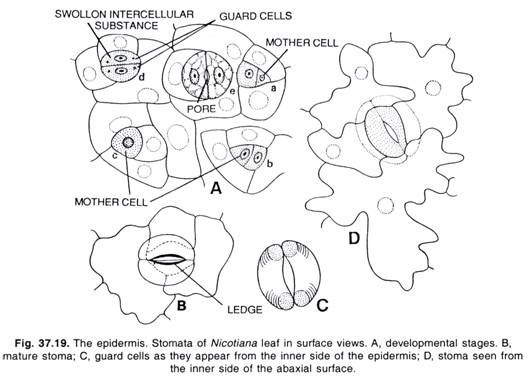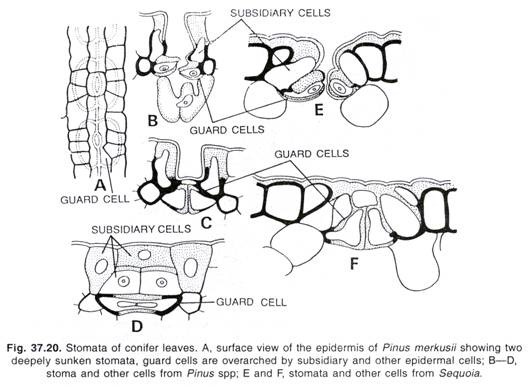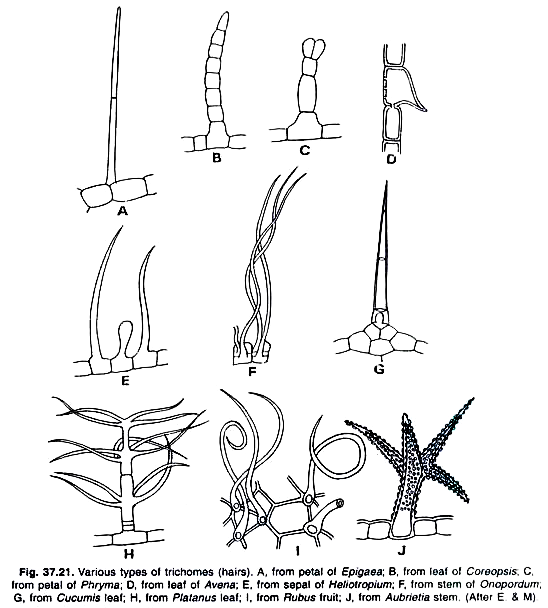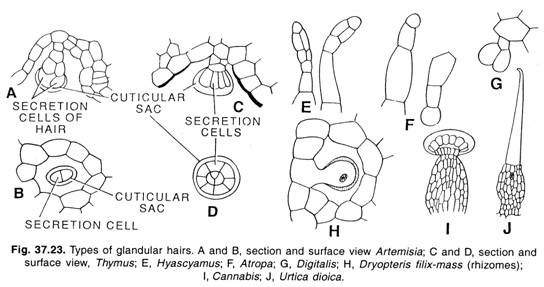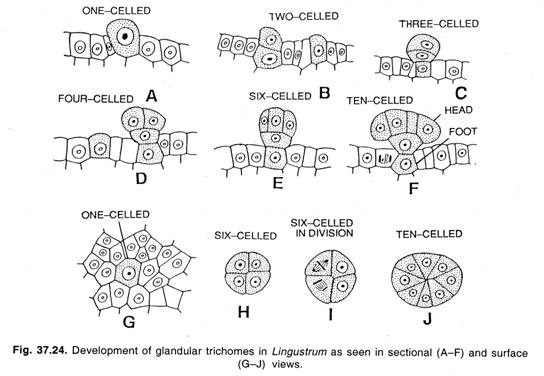ADVERTISEMENTS:
Let us learn about Trichomes. After reading this article you will learn about: 1. Introduction to Trichomes 2. Types of Trichomes 3. Cell Wall 4. Development 5. Trichomes and Taxonomy 6. Functions .
Introduction to Trichomes:
Some of the epidermal cells of most plants grow out in the form of hairs or trichomes. They may be found singly or less frequently in groups. They may be unicellular or multicellular and occur in various forms. They vary from small protuberances of the epidermal cells to complex branched or stellate multicellular structures.
The cells of the hairs may be dead or living. Very frequently the hairs lose their protoplasm in their cells.
ADVERTISEMENTS:
Trichomes may be classified into different morphological categories. One common type is referred to as hair.
The hairs may be subdivided into:
(i) Unicellular; and
(ii) Multicellular.
The unicellular hairs may be un-branched or branched. Multicellular hairs may consist of a single row of cells or several layers. Some multicellular hairs are branched in dendroid (tree-like) manner; others have branches oriented largely in one plane (stellate hairs.)
Types of Trichomes:
ADVERTISEMENTS:
Stinging Hairs:
They are one of the most interesting types of the trichomes. It contains a poisonous liquid and consists of a basal bulb like portion from which a stiff, slender and tapering structure is given out. This tapering structure ends in a small knob like or a sharp point.
The tip is usually somewhat oblique, and as the body of an animal or human being comes in its contact with some force, the tip is broken off, and the sharp pointed end readily penetrates the skin of the animal, and fluid is being transferred from the basal knob of the hair to the body of the animal.
Glandular Hairs:
ADVERTISEMENTS:
Many plants possess glandular hairs. These hairs may secrete oil, resin or mucilage. A typical glandular hair possesses a stalk and an enlarged terminal portion, which may be referred to as gland. The glandular hairs may be uni- or multicellular.
Active secretory cells of glandular trichomes have dense protoplasts and elaborate various substances, such as volatile oils, resins and mucilage’s, and gums. These substances are excreted and accumulate between the walls and cuticle. Their final removal from the hair occurs by rupture of the cuticle.
Scale or Peltate Hair:
A common type of trichome is the scale, also called peltate hair (from the latin peltatus, target-shaped or shield like, and attached by its lower surface). A scale consists of a discoid plate of cells, often borne on a stalk or attached directly to the foot.
ADVERTISEMENTS:
Cell Wall of Trichomes:
The cell walls of trichomes are commonly of cellulose and are covered with a cuticle. They may be lignified. Plant hairs often produce thick secondary walls as, for instance, the cotton seed hairs or the chamber hairs of Hamulus. The walls or trichomes are sometimes impregnated with silica or calcium carbonate. Their contents are varied in relation to function. Cystoliths and other crystals may develop in hairs.
Development of Trichomes:
A trichome is initiated as a protuberance from an epidermal cell. The protuberance elongates, and if it develops into a multicellular structure various divisions may follow the initial elongation.
Trichomes and Taxonomy:
ADVERTISEMENTS:
The trichome types have been successfully used in the classification of genera and even of species in certain families and in the recognition of interspecific hybrids (Metcalfe and Chalk, 1950; Hoff, 1950; Sporne, 1956; King and Robinson, 1969, 1970; Ramayya, 1972). King and Robinson (1969, 70) used trichome types to determine genetic limits among Compositae. Ramayya (1972), used the trichome types to establish genetic limits among Magnoliales.
Functions of Trichomes:
1. Generally a dense covering of woolly trichomes controls the rate of transpiration.
2. They also reduce the heating effect of sunlight.
3. They aid in the protection of plant body from outer injurious agencies.


